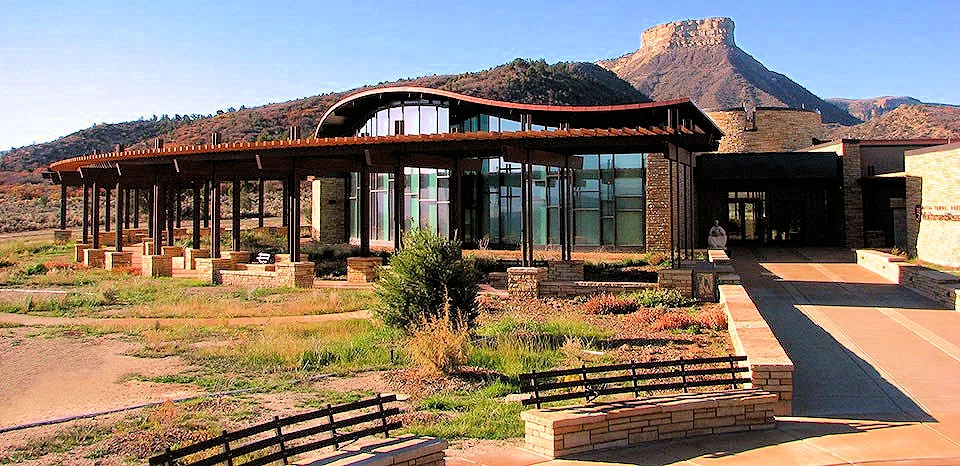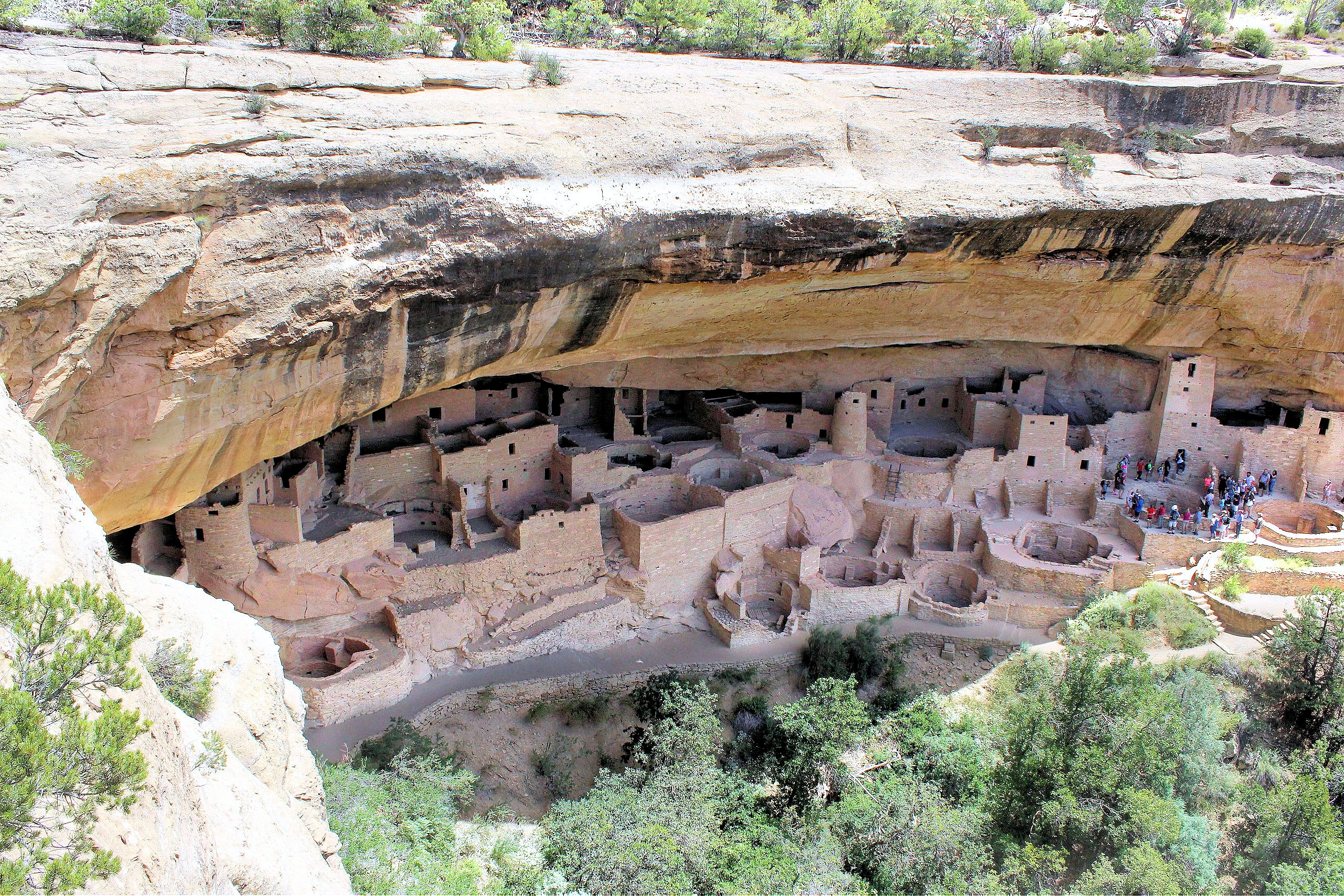Mesa Verde National Park
Exploring Ancient Cliff Dwellings and Ancestral Pueblo History
by Celeste Lipford and Terry Lipford - last updated on 11/11/2024
Mesa Verde National Park is located in southwest Colorado, about 35 miles west of Durango. It is known for its well-preserved ancestral Puebloan cliff dwellings, notably the huge Cliff Palace. The Chapin Mesa Archeological Museum has exhibits on the ancient Native American culture. Mesa Top Loop Road winds past archaeological sites and overlooks, including Sun Point Overlook with panoramic canyon views. Petroglyph Point Trail has several rock carvings.
This is the largest archaeological preserve in the United States, click here to read the Wikipedia Article about this area.
We felt as though we had embarked upon a journey back in time at Mesa Verde National Park, Colorado; To explore the fascinating cliff dwellings built by the Ancestral Puebloan people between 600 and 1300 AD. Over 600 cliff dwellings, including the iconic Cliff Palace, the largest cliff dwelling in North America, stand as a testament to their ingenuity and adaptation.
Interesting Mesa Verde Facts

Mesa Verde National Park, located in southwestern Colorado, is one of the most remarkable archaeological sites in the United States. It preserves the ancient cliff dwellings of the Ancestral Pueblo people. Here are some of the most interesting facts about this unique national park:
- Mesa Verde became a national park in 1906. President Theodore Roosevelt created the park to preserve the iconic cliff dwellings. It remains the only cultural park in the National Park System.
- The Mesa Verde National Park is home to numerous ruins of villages and dwellings built by the Ancestral Puebloan peoples. The lived in the dwellings at Mesa Verde from approximately 600 to 1300 AD.
- There are over 5,000 archaeological sites and over 600 cliff dwellings of the Pueblo people within the park.
- Descendants of Mesa Verde Ancestral Pueblo people spread out far and wide, and include the Hopi in Arizona and the T19 Rio Grande pueblos of New Mexico: aos, Picuris, Sandia, Isleta, San Juan, Santa Clara, San Ildefonso, Nambe, Tesuque, Jemez, Cochiti, Pojoaque, Santo Domingo, San Felipe, Santa Ana, Zia, Laguna, Acoma and Zuni.
- The most famous Mesa Verde dwelling is the Cliff Palace. It dates back more than 700 years and was likely once painted with bright colors. It is constructed from sandstone, wooden beams and mortar. It is the largest cliff dwelling in North America. With about 150 rooms and 23 kivas (ceremonial chambers), it was once home to over 100 people.
- Mesa Verde was likely deserted by 1300. No one is quite sure why. Some researchers blame crop failures. Around the late 1200s, the people of Mesa Verde suddenly abandoned the area, likely due to a combination of factors, including drought, resource depletion, and possibly social or political changes. They migrated south and became part of present-day Native American groups such as the Hopi and Zuni.
- The people of Mesa Verde were farmers who grew beans, corn and squash. They supplemented their diet by gathering other edible plants and hunting deer, squirrels, rabbits and other animals.
- Mesa Verde National Park covers 52,485 acres (or 81.4 square miles).
- In 1978, Mesa Verde was designated a UNESCO World Heritage Site in recognition of its incredible archaeological importance and the preservation of over 600 cliff dwellings and thousands of other archaeological sites.
Where is Mesa Verde, CO Located?
We had driven from the Lake Powell, AZ area to Durango, CO and our first day trip (from Durango) was to Mesa Verde, a one way trip of 35 miles. The drive from Durango on route 160 is very pretty, continous ascent up to the Hesperus Ski Area and then you will descend into a valley where the small town of Mancos resides. At this point, you will be able to see the huge table-top mountain where Mesa Verde exists.
The Mesa Verde National Park entrance sign is 7.8 miles west past Mancos and you will exit right and then turn left to cross over route 160. As soon as you cross the highway, you will note the road forks, go left into the visitor's center or right to proceed up the mountain to the cliff dwelling sites. If you are looking for trail maps or park information, the visitor center will be able to provide you with that kind of information.
Since this was our first time visiting the park, we stopped and acquired maps & information about what was open & not open. You could acquire the same information online at the National Park Service Mesa Verde site.
Mesa Verde is located within the expansive Colorado Plateau, a vast geographic region encompassing approximately 130,000 square miles and spanning parts of Colorado, Utah, Arizona, and New Mexico. This plateau is renowned for its stunning landscapes, which feature dramatic canyons, mesas, and diverse geological formations. Mesa Verde itself occupies a unique position in the southwestern corner of Colorado, sitting at the heart of this remarkable region.
Designated as a UNESCO World Heritage Site, Mesa Verde is not only a geological marvel but also a place of immense historical and cultural significance. The park's iconic cliff dwellings, built by the Ancestral Puebloans, are perched within the towering sandstone cliffs, providing a window into the lives of the people who thrived here over 700 years ago. Surrounded by the rugged beauty of the Colorado Plateau, visitors to Mesa Verde can explore its rich history and breathtaking vistas, making it a must-visit destination for those seeking both natural and cultural treasures.
Image Credits:
Image is the property of National Park Service via their website. and this map gives you a better idea of how large this park is. All other images (unless otherwise noted) are the property of Just Traveling Thru, LLC.
Spruce Tree House Area
As we left the visitor center and ascended the mountain, we navigated a series of steep switchbacks that offered breathtaking views of the valleys to the east and west. The drive itself was an experience, with numerous scenic turnouts providing perfect opportunities to stop, take in the landscape, and capture some incredible photos. If you're visiting, I highly recommend taking advantage of these pullouts—not only for the views but also to appreciate the vastness and rugged beauty of Mesa Verde National Park. Our primary destination on this leg of the journey was the Spruce Tree House area, one of the park’s most well-preserved and accessible cliff dwellings.
Before exploring Spruce Tree House, we decided to hike the Spruce Canyon Trail. However, once we saw just how steep and challenging the descent was, we adjusted our plans. Instead of completing the full trail, we hiked just past the cliff dwelling ruins, then turned back to allow more time to explore other parts of the park. Interestingly, the best views of the dwellings are from the top of the trail, so even without hiking far, visitors can still get fantastic panoramic perspectives of this ancient Puebloan site.
Perched above the canyon, Spruce Tree House is an architectural marvel, a multi-story Puebloan complex that once housed 60 to 80 people in 130 interconnected rooms. Built around 1210 AD, it remains one of the best-preserved cliff dwellings in Mesa Verde, thanks to the dry climate and natural rock overhangs that shielded it from the elements. Its remarkably intact state makes it almost unbelievable that it was constructed over 800 years ago. When open to visitors, one of the most intriguing aspects is the opportunity to climb inside a kiva, the underground ceremonial chambers that served as the spiritual and political heart of the community. These sacred spaces were essential for rituals, meetings, and social gatherings, reflecting the deep cultural and spiritual traditions of the Ancestral Puebloans.
Even though Spruce Tree House is currently closed to the public due to rockfall concerns, it remains a must-see for its stunning preservation and historical significance. Whether viewed from an overlook or explored through guided tours when available, it provides a rare window into the ingenuity and resilience of the Ancestral Puebloan civilization that thrived in this rugged landscape centuries ago.
Spruce Tree House (located above the Spruce Canyon Trail, image # 1 above) was the equivalent of an Puebloan block of flats when it was built in 1210, with 130 rooms home to 60 to 80 people. The dry climate and shelter from the rocks means that it is so well preserved that it is hard to imagine it was built so long ago. When Spruce Tree House is open you can climb inside one of the kivas. These underground chambers were the heart & soul of the community, used by the Puebloans for religious ceremonies and political meetings.
Mesa Verde Cliff Palace Dwelling
Our next stop was the Cliff Palace dwelling, closed to public access because of rock falling & trail issues. So all of our images were taken from various vantage points.
Perhaps the most notable Mesa Verde cliff dwelling, Cliff Palace is the largest of its kind in North America. The structure consists of sandstone and wooden beams held together by a homemade mortar consisting of soil, water, and ash. Small bits of stone were mixed into the mortar, reinforcing its strength.
Cliff Palace is entirely unique in its size and is actually considered a village in and of itself. The palace boasts 150 rooms, and it’s thought to have housed more than 100 residents in its 13th-century glory days. Rooms are roughly 6 by 8 feet, and it’s believed that larger groups of people as well as families would share the space. Some of the rooms were even originally adorned in bright, cheery colors, including pinks, reds, and yellows. The Anasazi people utilized smaller rooms to store crops, and the large, circular rooms, called kivas, hosted rituals and ceremonies.
Image Credits:
Image #1 (top of this section) is the property of MARELBU via Wikimedia Commons using the Creative Commons Attribution 3.0 Unported license. All other images are the property of Just Traveling Thru, LLC unless otherwise noted.
Mesa Verde Sun Temple
Mesa Verde's Sun Temple is thought to have been an astronomical observatory. This is because Pueblonians used astronomical observations to plan their farming and religious ceremonies, drawing on both natural features in the landscape and masonry structures built for this purpose.
The temple is D-shaped, and its alignment is 10.7 degrees off true east–west. Its location and orientation indicate that its builders understood the cycles of both the sun and the moon. It is aligned to the major lunar standstill, which occurs once every 18.6 years, and the sunset during the winter solstice, which can be viewed setting over the temple from a platform at the south end of Cliff Palace, across Fewkes Canyon. At the bottom of the canyon is the Sun Temple fire pit, which is illuminated by the first rays of the rising sun during the winter solstice. Sun Temple is one of the largest exclusively ceremonial structures ever built by the Ancestral Puebloans.
Some Useful Links for Mesa Verde National Park
- Just Traveling Thru Travel Planning Tips
- Mesa Verde National Park Service page.
- Google Search Results list for "restaurants in/near the Mesa Verde National Park area"
- Google Search Results list for "accommodations in/near the Mesa Verde National Park area"
- Amazon Search Results list for "Mesa Verde National Park"
- Youtube Search Results for "Mesa Verde National Park"
- Visit our Youtube Channel
- Mesa Verde National Park Tour with Archaeology Guide from the "Get Your Guide" site
- Our Image Gallery for Mesa Verde National Park
- Wikipedia Article for Mesa Verde National Park
- Google Image Gallery for Mesa Verde National Park
- Google Reviews for Mesa Verde National Park
Trip Itinerary
As you can see by the this map, our trip covered 3 different states, approximately 1,600 road miles and allowed us to see some spectacular geography. You might think that a trip of this distance would be something that would result in a "tired of driving" mood - but our stops were so diverse with such incredible geography and fun things to do, that we found that we looked forward to each morning to where we could continue our adventures!
Click any link below to go directly to that page;
Note: All images featured on this page are the exclusive property of Just Traveling Thru, LLC, unless otherwise stated. When images from external sources are used, full credit is given to the original creator, along with a link to the specified license or usage terms. We are committed to respecting copyright and intellectual property rights, ensuring that all third-party images are properly attributed. If you have any questions regarding image ownership or usage rights, please feel free to contact us.
To review any of our content, make suggestions and/or comments, please click the "About" menu link at the top of this page. You will find our "Contact Us" link on that drop-down menu.





















